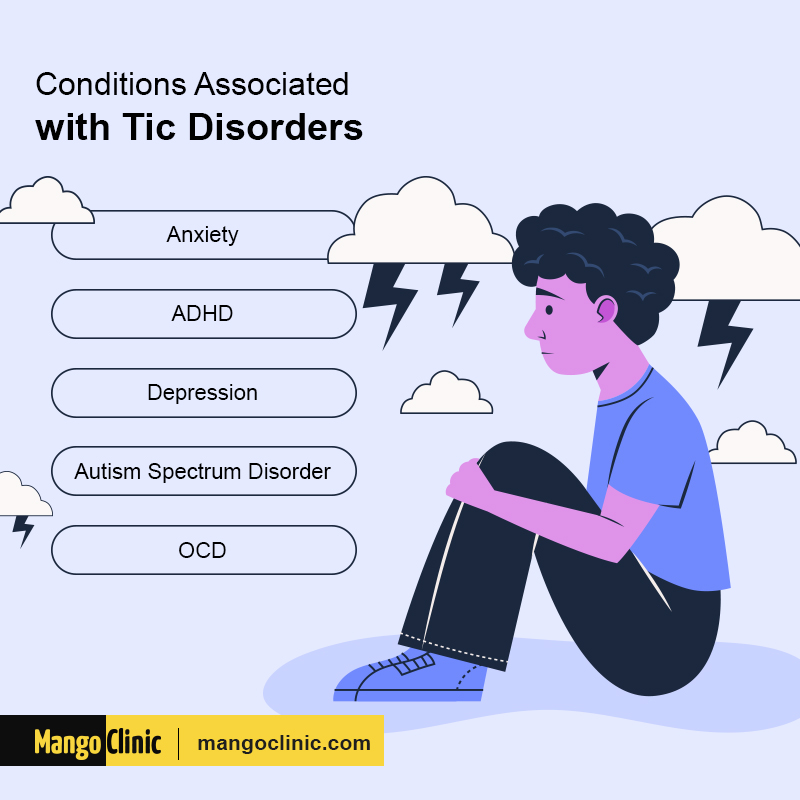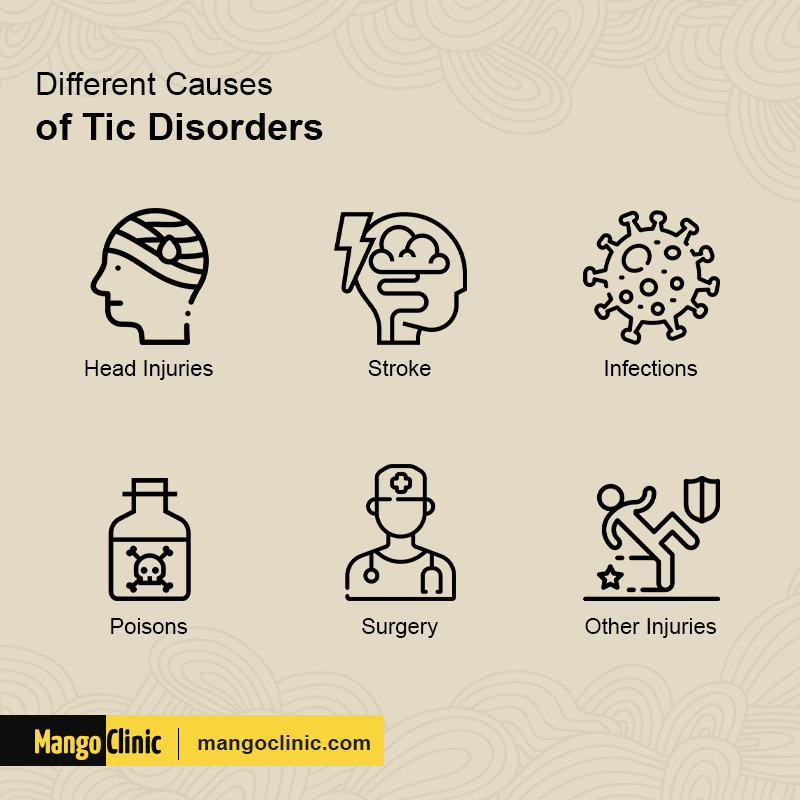ADHD Tics: Everything You Need to Know about ADHD & Tics

Tics are abrupt spasms of an entire muscle that most commonly affect the eyes, lips, shoulders, and neck. Tics can take the form of movements, such as uncontrollable blinking eyelids or sounds, such as clearing one’s throat or producing grunting noises.
ADHD at Work can lead you to uncomfortable feelings. Click the button below to book your appointment.
Table of Contents
Tic Disorder and ADHD
Tics are more common in children that have ADHD than in children without the disease. 25% of children with ADHD develop a tic disorder. In contrast, 45% or more of kids with Tourette Syndrome are also diagnosed with ADHD. Symptoms of ADHD usually appear before tics appear.
Although the diagnostic criteria of tic and ADHD disorder are distinct, some significant intersecting phenomena may assist in understanding their co-occurrence. In particular, impulsive behaviors in ADHD and tics may indicate a brain release of unwanted behavior patterns connected to sensation, emotion, cognition, and movement.
Diagnosing Tic Disorders
Health practitioners consult the Diagnostic and Statistical Manual of Mental Disorders, Fifth Edition, to diagnose tic disorders. The manual recognizes three types of tic disorders:
- Tourette’s syndrome
- Vocal or motor tic disorder
- Tic syndrome (provisional)
Tic disorders vary depending on the types of tic exhibited (vocal, motor, or both) and how long the symptoms have been present. Tic symptoms have been present for a year or less in people with tic syndrome, and they have both vocal and motor tics.
Individuals with recurrent vocal or motor tic disorders have experienced tic symptoms for more than a year and have either vocal or motor tics. Provisional tic disorders are characterized by vocal or motor tics, or both, present for less than a year.

How Do ADHD Tics Feel like?
Tics are sudden, repetitive utterances, gestures, or movements that mimic normal behavior in some way. They are usually short-lived, lasting about a second. Tics usually come in bursts like convulsions. They might occur alone or in a coordinated sequence, and their intensity and frequency can vary. Tics can be consciously suppressed for a short period, but they will eventually recur.
Motor tics are common in children aged between five and nine. However, it can be challenging to recognize tic behaviors when they first appear. The diagnosis will not be made most times until you and your doctor have gone through the entire clinical picture.
Tics might become more frequent and intense as a result of stress. They aren’t present while sleeping and are less noticeable when active. Tic disorders are frequently passed down through families. Therefore, a tic disorder may have been diagnosed in a grandparent, parent, uncle, aunt, or other relatives.
Get yourself evaluated for ADHD and lower your stress levels. Click the button below to book your appointment.
ADHD Tics Symptoms
Tics can manifest as muscle activity or vocal activity. Simple, abrupt motions, like head jerking, shoulder shrugging, or eye blinking to more complicated purposeful-appearing activities, such as facial expressions or arm and head gestures, are all examples of motor tics. Vocal tics cover a wide range of sounds, from clearing your throat to more complicated speech and vocalization.
Puckering the forehead, grimacing, lifting eyebrows, winking, trembling nostrils, blinking eyelids, wrinkling the nose, twitching mouth, twisting neck, and glancing sideways are the most frequent facial and head tics. Other tics target the hands and arms, causing jerking movements of the arms, hands, fingers, and fist clenching.
Tics are classified by how long they linger. Transient Tic Syndrome is defined as a pattern of tics that lasts less than a year; Persistent Motor Tic Syndrome is defined as a pattern that lasts longer than a year.
Tourette’s syndrome is a condition characterized by a mix of various physical tics and vocal tics. The condition is hereditary. Vocal tics may include grunts, clicks, yelps, coughs, barks, or words. There is a desire to scream obscenities in some instances.

What Can You Do about ADHD and Tics?
- Think about behavioral therapy. Two types of psychotherapy have proven to be helpful. Exposure-response and habit reversal therapies are two proven methods for reducing tics.
- It’s critical to speak to a healthcare expert about symptoms that are causing you the most trouble. ADHD symptoms can create more problems than moderate tics for certain people. Managing tic symptoms successfully may be particularly crucial for persons with chronic or complicated tics and minor ADHD issues.
- Concentrate on improving your sleeping habits. When people are tired, their tics become worse – or certainly more frequent. A good night’s rest can make a major difference. This is especially difficult for those with ADHD, as sleep problems are a common symptom of the disorder.
- Make every effort to decrease tension and worry. Tics are thought to become more severe when people are stressed or anxious. In reality, tics may have evolved as a stress-response mechanism. These are all helpful techniques for reducing anxiety and dealing with stressful situations:
- Psychotherapy
- Yoga
- Energy healing meditation
- Physical exercise
Medication
Medication may be recommended in kids with Tourette Disorder and ADHD after a thorough evaluation and trial of behavior therapy. Guanfacine or clonidine are commonly used to alleviate mild symptoms. Clonidine is available as a tablet or as a skin patch.
Guanfacine or clonidine has the benefit of treating many symptoms of TS, including ADHD, tics, obsessive-compulsive behaviors, among other behaviors. The most common side effect of these drugs is weariness or falling asleep. Any stimulant pharmaceutical treatment should be watched adequately for adverse effects, particularly the incidence or worsening of tics.
ADHD Tics in Adults
Tic disorders, such as Tourette disorders, can occur alongside ADHD. In addition, autistic spectrum and OCD disorders are common in people with ADHD. These disorders can induce repetitive motion and tics.
Looking for medicinal ADHD treatment? Click the button below to book your appointment.
Conclusion
Some doctors have expressed fears that ADHD drugs can cause or increase tics, yet research shows this is not the case. If you are experiencing ADHD or tics, it is important to speak with a doctor to rule out any other conditions causing these symptoms. Medication, increased rest, behavioral therapy, and stress levels reduction may be able to help you feel better.
Contact us at Mango Clinic for ADHD treatment or click the banner below to book your appointment.





